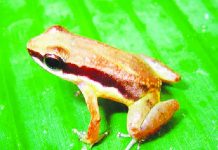Every year, on July 26, the world at large celebrates World Mangrove Day. Unlike other international days, there is no annual theme for this observance. The aims of World Mangrove Day are:
* To raise awareness of the importance of mangrove ecosystems as a unique, special and vulnerable ecosystem; and
* To promote solutions for their sustainable management, conservation and use.
One might ask: why should we celebrate mangroves?
Mangrove forests are unique, in that one acre of mangroves can absorb up to five times more carbon than an acre of terrestrial forest! This is because tropical mangroves store most of their carbon in the soil through their extensive root systems. The destruction of mangrove forests therefore emits comparatively large amounts of carbon dioxide, a greenhouse gas.
If that is not enough to pique your interest, let’s read on some more. Mangroves are rare, spectacular and prolific ecosystems situated on the boundary between land and sea. These extraordinary ecosystems contribute to the wellbeing, food security, and protection of coastal communities worldwide. They support a rich biodiversity, and provide a valuable nursery habitat for fish and crustaceans. Mangroves also act as a form of natural coastal defense against storm surges, tsunamis, rising sea levels, and erosion. Nothing is scarier than having waves crashing into our shores with no mechanism in place to break their force. Yet mangroves are disappearing three to five times faster than overall global forest losses, with serious ecological and socio-economic impacts.
Let us zero in on Guyana
There are three main species of mangroves in Guyana, Avicennia germinans (black mangrove), Rhizophora mangle (red mangrove), and Laguncularia racemosa (white mangrove).
* Mangroves contribute substantially to sea defense in Guyana by dampening wave action and reducing wave energy;
* Mangroves also help prevent erosion by stabilising sediments with their tangled root systems;
* Mangroves play an important role in the fight against climate change by trapping and storing carbon;
* Moreover, mangroves provide a habitat for many fish and bird species, their roots often serving as a safe zone which allows juvenile fishes and other marine animals to grow;
* Mangroves protect other ecosystems – seagrass beds and coral reefs – by filtering pollutants and trapping sediments from inland. In the same way, they protect water quality;
* The leaves of the mangroves have been used in tea, medicine, and livestock feed;
During the period January 14-15, 2020, EPA conducted a workshop titled “Berbice Restoration of Wellington Park Mangrove Reserve Sub- Regional Project”, under the North Brazil Shelf, Large Marine Ecosystem Project, at its Whim office. This project was focused on the restoration of a coastal wetland area (mangrove area) by means of an Ecosystem- Based Management (EBM) approach. The EBM approach places significant emphasis on a community’s involvement in the maintenance and management of its community. Ten members of the Wellington Park community were trained to collect water, soil, vegetation, invertebrate and vertebrate samples. The aim was to have a cadre of trained residents who can be re-engaged in the future and assist with the restoration project. The EPA believes that this is one step in promoting community involvement in the management of their environment.
You can learn more about Guyana’s unique mangrove ecosystems by watching Reel Guyana’s documentary on the Barima/Mora passage.
References
https://www.mangrovealliance.org/why-care-about-mangroves-on-earth-day/
Click to access gy-nr-05-en.pdf
https://www.epaguyana.org/epa/news/202-enforcement-action-environmental-authorisation
https://www.mangrovealliance.org/save-our-mangroves-now/










